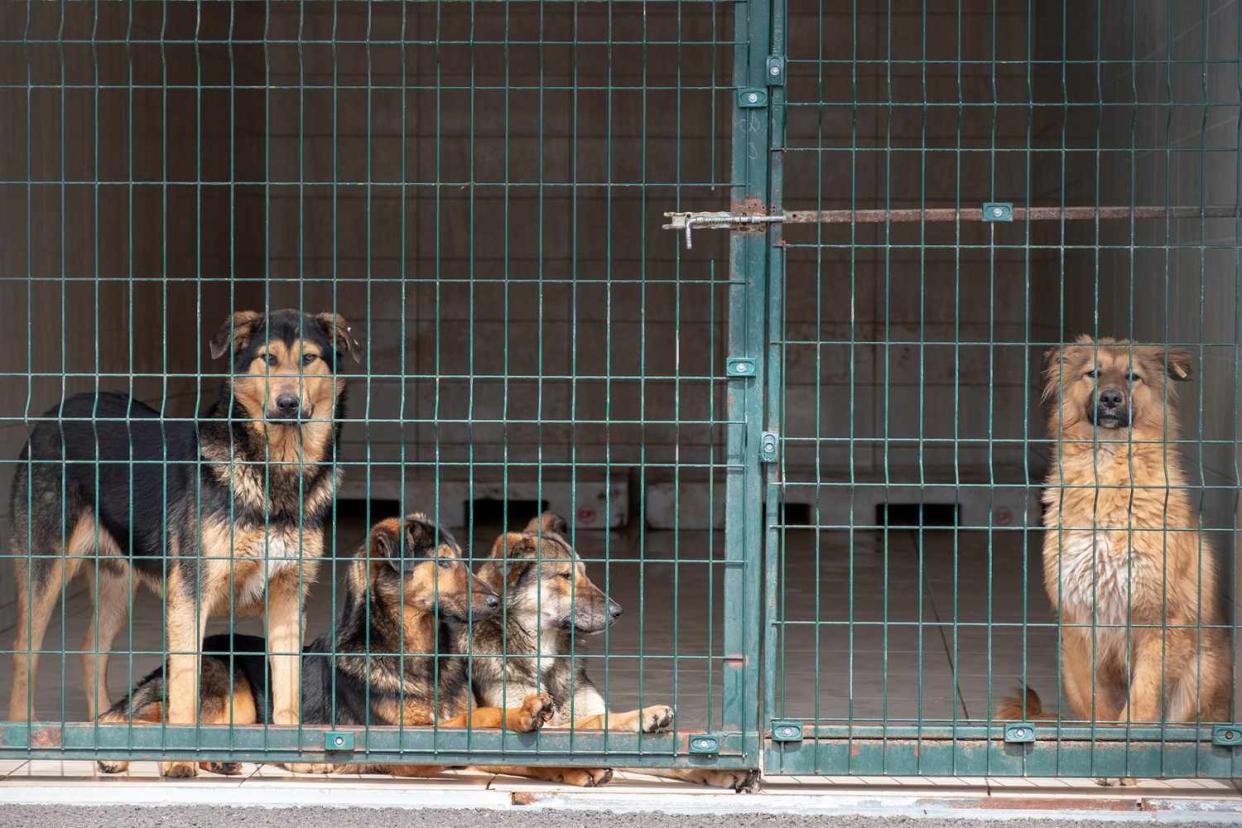U.S. Animal Shelters Are Under More Pressure Than Ever. Here Are 6 Ways You Can Help

akinbostanci / Getty
Editor's note: This story originally published in 2022, but animal shelters remain in crisis midway through 2023. Here's how you can help.
Stress is nothing new to animal shelters, but overcrowded facilities and now year three of the COVID-19 pandemic has put many under even more pressure.
Empty shelters may have gotten a lot of buzz during the spring of 2020. Now, things are quite different. The sheer length of the pandemic combined with the now-waning omicron wave has put shelters in a bind with fewer staff and too many cats and dogs, says Holly Sizemore, chief mission officer at Best Friends Animal Society. Last week, Best Friends estimated that roughly 100,000 more animals are awaiting adoption than there were at this time in 2021.
In Kentucky, some shelters reached capacity last month. In North Carolina, Macon County Animal Services lowered its adoption fee to $20 to help ease its overcrowded shelter. Pima Animal Care Center, serving Tucson, Ariz., and the surrounding area, announced last month it needed "emergency foster homes" to combat staff shortages.
"We've been at capacity since June and now we are hitting a critical low in staffing due to the contagiousness of the omicron variant," Director of Animal Services Monica Dangler said on the organization's website Jan. 20. "Like many other businesses right now, we are seeing staff members getting sick despite being vaccinated, so we need to drastically reduce the number of pets in the shelter to be able to provide proper care."
Over the summer, Best Friends surveyed more than 150 animal shelters and rescues and found that 85 percent of them where short on staffing while 41 percent were operating at 25 percent of their normal staffing levels. It's likely gotten worse in some places since then.
So while the omicron wave is waning, there's still plenty you can do to help your local animal shelter. Here are six ideas from a of couple experts.
Adopt or Foster
Yeah, it's pretty obvious, but the best way to help a cat or dog in a shelter is to get them out of the shelter. Even in the best of times—when shelter pets are healthy and receive plenty of enrichment—the facilities can still be stressful places for our pets, Sizemore says.
She encourages potential pet owners to open their minds and maybe consider adopting pets who are different from the ones they've always envisioned.
"We just need a few people who may have been thinking about it to just take the leap and go visit their local shelter," Sizemore tells Daily Paws.
RELATED: Your Guide to Adopting a Dog for the First Time
You'll probably have plenty to choose from! PetPoint, an organization that tracks shelter pet intake and adoptions, found that shelters took in 7.5 percent more cats in 2021 than in 2020. For dogs, shelters took in 4.2 percent more.
Not ready for a long-term commitment? Try fostering a dog or cat. Jerrica Owen, executive director of the National Animal Care & Control Association, says that can make a "huge" difference, even if the fostering period only lasts a few days.
Fostering allows you, and the shelter staff, to see how pets can act when they're living outside of the shelter, she says. That provides potentially valuable information to help them get adopted all while freeing up some much-needed space at the shelter. (Plus, there's nothing wrong with a foster fail.)
Donate or Volunteer
Another obvious one. The "great resignation" is affecting animal shelters as well, so they might welcome an extra set of hands to clean kennels or play with puppies. Have veterinary experience? Even better. Your local shelter could really use you.
We don't all have extra time, however, so maybe all you can give is money or pet-care items. That helps! Chewy has a database that can identify shelters and rescues in your area that need supplies and toys. Others publish their wish lists on their website.
Keep Animals Out of Shelters
If you can't take a dog or cat out of a shelter, maybe you can keep them from going in at all. While they boast dedicated, hardworking staff, shelters can be disease hotspots, and reducing the number of lost pets who end up there can help control the spread of disease. Also, people reclaiming their lost pets often have to pay an overnight fee to take them back home—which can be a barrier to reunification.
And remember, the shelters are crowded right now anyhow. No need to add extra stress if you can help it.
So if you come across a friendly lost dog or cat, do what Owen did recently. A lost Chihuahua made their way into Owen's yard. Knowing the dog's home was probably close by, Owen posted the lost dog on Facebook, and the owners knew where their dog was within half an hour.
"They were so happy," Owen says.
So you can temporarily take in lost pets and post to social media, but you can also see if there are any locations near you—a vet's office or fire station perhaps—where you can go to scan a lost pet's microchip, Owen says. That can save another trip to the shelter.
RELATED: Updated Your Pet's Microchip Contact Info Lately? It's Easy
Spread the Word
If you know your local animal shelter could use some help, take to social media or talk to your friends to see who can donate or volunteer. You can even retweet or re-post lost pet notices, helping get them in front of the right pair of eyes.
More hands—typing, playing, or even shoveling—makes less work!
